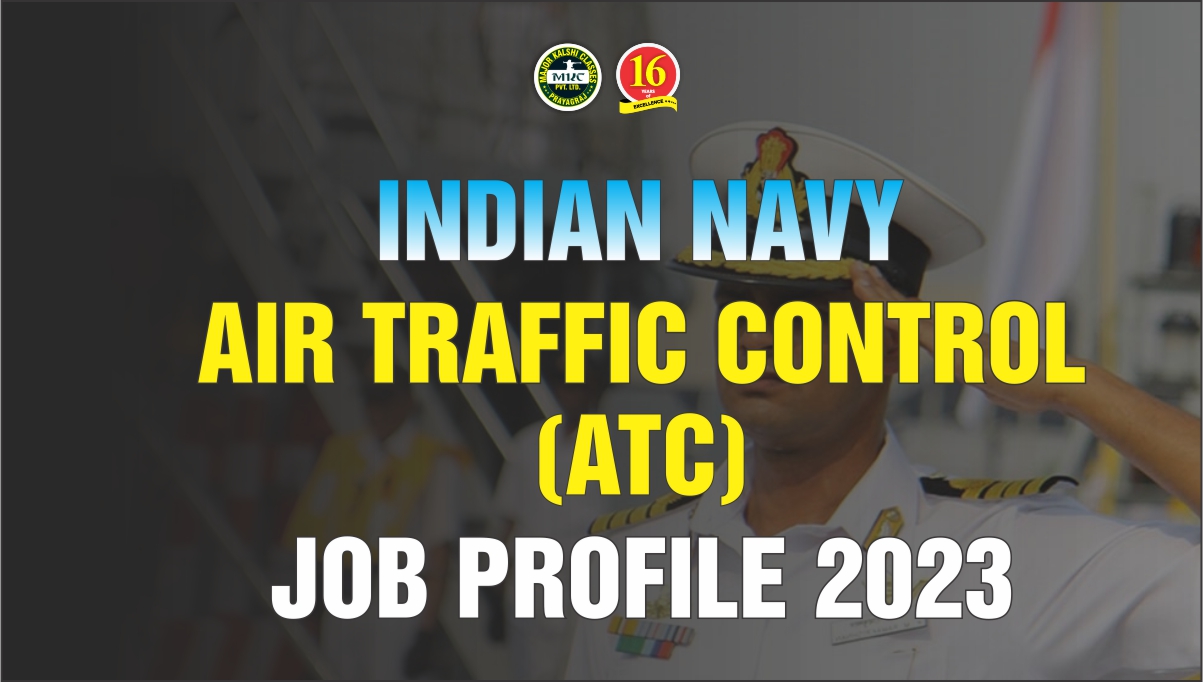Indian Navy Air Traffic Control (ATC) Job Profile 2023
Navy recently released notification for the recruitment of 227 post in which 10 post for Air Traffic Control (ATC). The Indian Navy Air Traffic Control (ATC) officer is responsible for managing and directing air traffic movements at naval air stations, airfields, and onboard ships.
Navy Air Traffic Control (ATC) Job Profile
Table of Contents
The primary job profile of an Indian Navy ATC officer includes:
- Air Traffic Management: Indian Navy ATC officers are responsible for managing and directing air traffic movements at naval air stations, airfields, and onboard ships. They ensure safe, orderly, and expeditious flow of air traffic.
- Communication: ATC officers communicate with pilots to provide them with information about weather conditions, runway availability, and other important information related to air traffic management.
- Navigation Aids: ATC officers operate and maintain navigation aids, such as radar, radios, and other communication equipment, to monitor and direct air traffic.
- Safety: ATC officers ensure the safety of aircraft, passengers, and crew by providing guidance and instructions to pilots to avoid any collisions or accidents.
- Training: ATC officers are responsible for training and supervising other personnel involved in air traffic control operations.
- Crisis Management: ATC officers are also responsible for managing any emergency situations related to air traffic, such as aircraft malfunctions, weather-related issues, or any other unexpected events.
- Shift work: Indian Navy ATC officers work in shifts, which can be long and irregular, including nights, weekends, and public holidays.
The Indian Navy Air Traffic Control (ATC) officer’s job profile includes managing and directing air traffic movements at naval air stations, airfields, and onboard ships, ensuring the safety of aircraft, passengers, and crew, providing guidance and instructions to pilots, and handling emergency situations related to air traffic.
Qualifications:
To become an Indian Navy ATC officer, one must have a Bachelor’s degree in any discipline with Physics and Mathematics as compulsory subjects, or a Bachelor’s degree in Engineering or Technology with a minimum of 60% marks.
Training:
After selection, Indian Navy ATC officers undergo rigorous training in air traffic control procedures, communication, navigation aids, and other related subjects.
Promotion:
Promotion in the Indian Navy ATC cadre is based on merit and performance. The rank structure for ATC officers is the same as that for other branches of the Indian Navy, with promotions based on seniority, qualifications, and performance.
Career Opportunities:
ATC officers have opportunities to serve on various types of naval aircraft, including helicopters, transport aircraft, and fighter aircraft. They also have opportunities to serve in various naval air stations, airfields, and onboard ships.
Challenges of ATC:
Air traffic control is a challenging and demanding profession that requires a high level of concentration, attention to detail, and quick decision-making skills. Indian Navy ATC officers must be able to handle stress and pressure in a fast-paced and dynamic environment.
The Indian Navy Air Traffic Control (ATC) job profile comes with several challenges, including:
- High-pressure environment: ATC officers must handle multiple tasks at once and make quick decisions, which can be stressful.
- Long and irregular hours: ATC officers work in shifts, which can be long and irregular, including nights, weekends, and public holidays.
- Continuous learning: With advances in technology and changing aviation rules and regulations, ATC officers must continuously update their knowledge and skills to stay current in their profession.
- Communication barriers: Language barriers and poor communication can cause misunderstandings and create safety hazards. ATC officers must be able to communicate effectively with pilots and other personnel in a high-stress environment.
- Safety: ATC officers must ensure the safety of aircraft, passengers, and crew by providing guidance and instructions to pilots to avoid any collisions or accidents.
- Crisis management: ATC officers must handle emergency situations related to air traffic, such as aircraft malfunctions, weather-related issues, or any other unexpected events.
- Physical and mental fitness: ATC officers must maintain physical and mental fitness to handle the stress and pressure of the job, and to be alert and focused during long hours of work.
Navy Air Traffic Control Salary:-
The salary of an Indian Navy Air Traffic Control (ATC) officer varies based on their rank, experience, and years of service. As per the 7th pay commission, the approximate pay scale of an Indian Navy ATC officer is as follows:
- Sub Lieutenant: Rs. 56,100 – Rs. 1,77,500
- Lieutenant: Rs. 61,300 – Rs. 1,93,900
- Lieutenant Commander: Rs. 69,400 – Rs. 2,07,200
- Commander: Rs. 1,21,200 – Rs. 2,12,400
In addition to the basic pay, Indian Navy ATC officers are entitled to various allowances, such as dearness allowance, kit maintenance allowance, transport allowance, and others. They also receive benefits such as free medical facilities for self and dependents, canteen facilities, and other perks and privileges.








